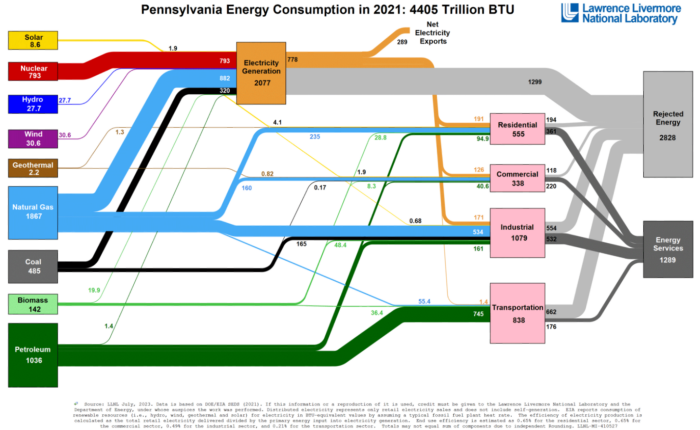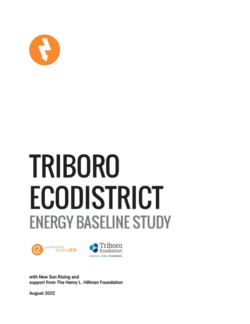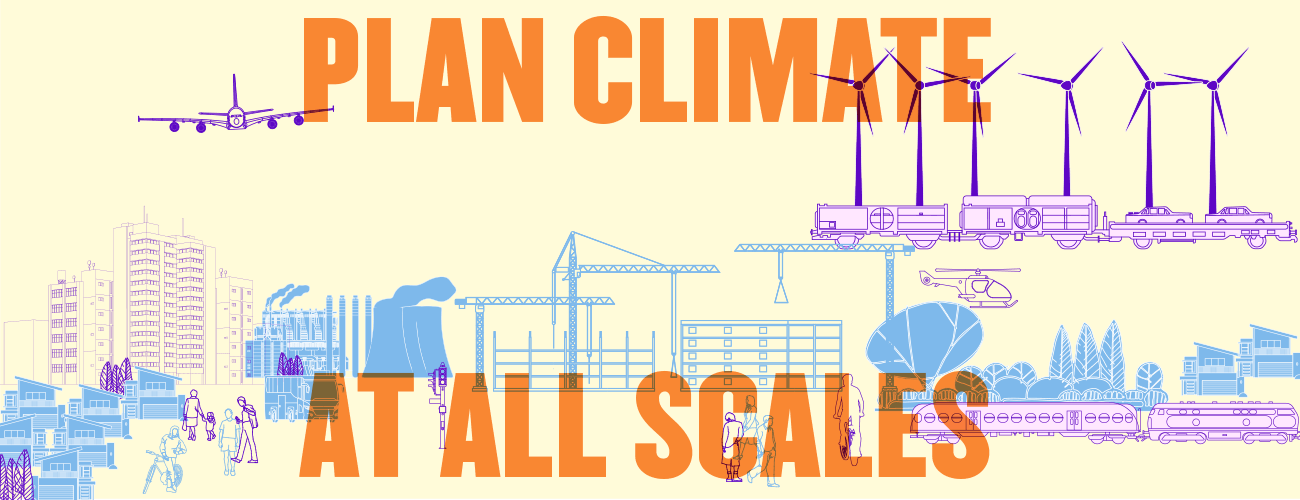Climate Action Planning at Different Scales
Climate Action Plans (CAPs) are comprehensive roadmaps outlining the specific activities that an entity or network will undertake to address climate change through reducing greenhouse gas emissions and conserving resources. Because climate change affects everyone on the planet and its impacts are increasingly recognized as a shared responsibility, organizations and governing authorities at every scale are engaging in action planning to develop and prioritize their initiatives. These plans may conform to varying standards that can be mandated such as the Global Reporting Initiative (GRI). In the United States, climate action planning takes place in both grassroots and official contexts. Communities, local governments, regional authorities, nonprofit organizations, and businesses are all potential conveners and stewards of CAPs.
Marc Mondor, AIA, Principal at evolveEA, serves as Vice Chair of the Pennsylvania Climate Change Advisory Committee, assisting the Pennsylvania Department of Environmental Protection (DEP) with the forthcoming 2024 Pennsylvania Climate Action Plan. The Plan is a response to an annual Climate Impact Assessment, laying out cost-effective pathways for both greenhouse gas reduction and adaptation. These pathways are categorized into sectors: built environment, transportation, industry, energy generation, waste, and land use. We will have more information about this important Plan throughout the year.
The annual Climate Impact Assessment published by the Pennsylvania DEP, reveals the extent to which increasing temperatures, heavy precipitation, flooding, and heat waves pose the largest hazards. In Pennsylvania, a large state of 13 million people with enormous natural resources and topographical variety, these hazards are not only increasing but accelerating. For example, the 2021 Impact Assessment predicted an astounding 5.9 degree increase across the state from 2020 to 2050. Now the 2024 Impact Assessment predicts an even higher 6.7 degree increase in this same period! This simple temperature change, and the speed of it, will have an enormous impact on human health, economic vitality, and quality of life across the entire commonwealth.

Energy flow diagram from the Pennsylvania 2021 Climate Action Plan by Lawrence Livermore National Lab and the Department of Energy. This diagram shows energy inputs, use, and waste.
On the more local level, Pennsylvania has a robust PA Climate Network to support municipalities in the creation of their own Local Climate Action Plans (LCAP). Another local resource for CAP support is the Southwest Pennsylvania Commission, which helps guide the distribution of EPA funding to tribes and government entities across SPC’s ten-county region in the development of Climate Action Plans (note that grant applications are due April 1, 2024). Funding opportunities to address climate change at all levels of government have greatly increased with the recent Inflation Reduction Act and Bipartisan Infrastructure Law, both of which view climate action planning as a generational investment.
Community planning can make it possible to implement and track progress on high-level climate action goals while helping local stakeholders thrive and access funding for projects and programs. Through comprehensive plans and Ecodistrict Plans, municipalities can establish a community vision that reflects residents’ values and priorities and can inform and direct future Climate Action Plans.
 One example of this community effort is a series of planning projects facilitated by evolveEA for The Triboro Ecodistrict in western Pennsylvania. This partnership consists of three municipalities, Etna, Millvale, and Sharpsburg, with whom evolveEA has developed a series of plans that are as data-rich as they are transformative. A strong foundation of grassroots action has guided in-depth planning focused on social equity, air quality, food, water, mobility, and energy. Over the past decade, our approach has been to collaborate with local stakeholders to build a MOVEMENT of community members who not only imagine their collective future, but can also implement it. Our Triboro Ecodistrict Energy Baseline Study helps these municipal partners prioritize decisions about renewable energy adoption and energy conservation efforts and understand the realities of what’s possible.
One example of this community effort is a series of planning projects facilitated by evolveEA for The Triboro Ecodistrict in western Pennsylvania. This partnership consists of three municipalities, Etna, Millvale, and Sharpsburg, with whom evolveEA has developed a series of plans that are as data-rich as they are transformative. A strong foundation of grassroots action has guided in-depth planning focused on social equity, air quality, food, water, mobility, and energy. Over the past decade, our approach has been to collaborate with local stakeholders to build a MOVEMENT of community members who not only imagine their collective future, but can also implement it. Our Triboro Ecodistrict Energy Baseline Study helps these municipal partners prioritize decisions about renewable energy adoption and energy conservation efforts and understand the realities of what’s possible.
By planning to act at every scale, opportunities arise for greater impact. Networks of communities and partners have also been able to inform one another on best practices, funding streams, and more. Often the key to being able to take advantage of funding opportunities is simply to have an implementable plan in place. To learn more about evolveEA’s facilitation, consulting, and planning work and its applicability to your own systems, reach out and contact us today.


